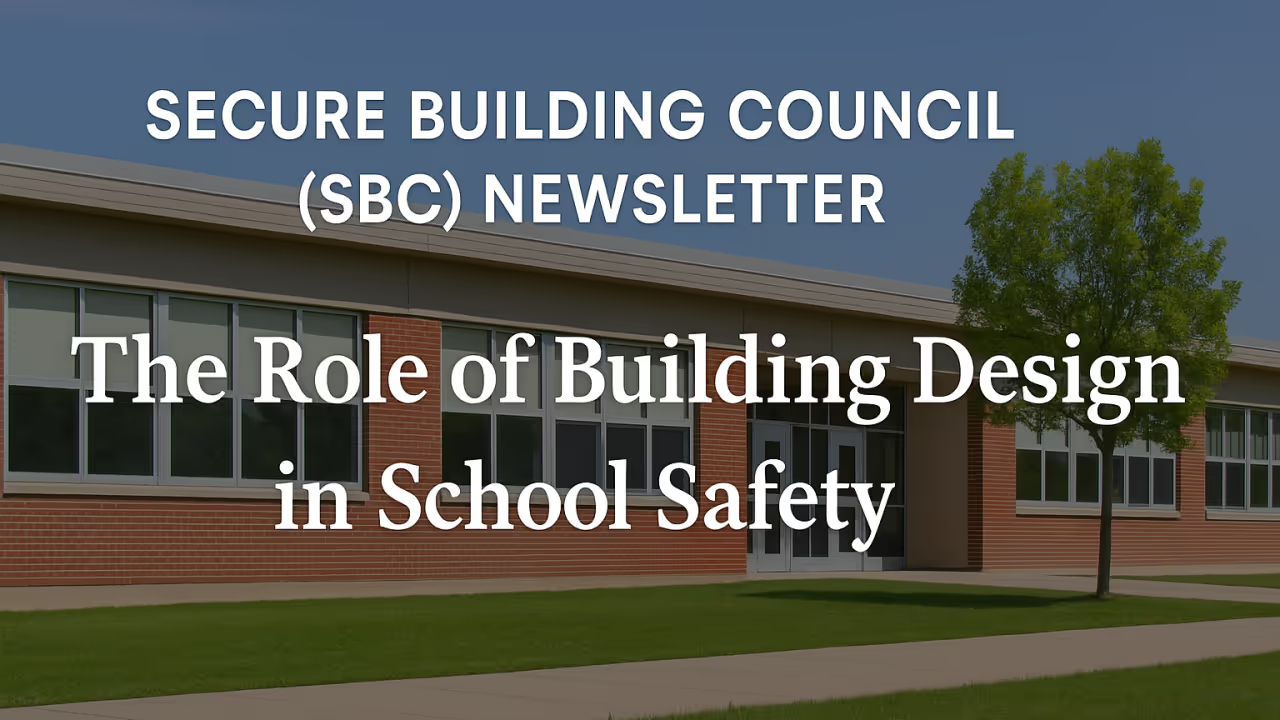The Role of Building Design in School Safety

School safety isn’t just a priority. It’s the foundation of every successful learning environment. From educators to architects, we all play a role in creating spaces where students can thrive without fear. School safety is multifaceted, requiring a thoughtful blend of physical security measures, technological advancements, and well-practiced response protocols. Building design plays a crucial role in this equation, acting as the foundation upon which these safety elements come together.
Security as Concentric Circles
Think of school safety like a series of concentric circles, each offering an additional protection layer. At the center is the classroom. The last line of defense. The more layers an intruder must penetrate, the more time responders have to act. Each additional layer of protection increases the time and effort required to reach the locked classroom. The layers are intended to provide time barriers, giving first responders critical seconds when they matter most. The earlier a school is alerted to a potential issue, the more time there is to initiate a response protocol such as the Standard Response Protocol (SRP) from The “I Love U Guys” Foundation.
The outermost layer includes the surrounding community, where awareness programs, anonymous reporting systems, and cooperation with local law enforcement can provide early warnings about potential threats. But as we move inward, the facility's design begins to play a critical role in student and staff security. Perimeter security, such as fencing, monitored access points, and designated visitor entry areas, helps control who enters the campus.
Within the school grounds, controlled access to buildings through secure vestibules, locked exterior doors, and surveillance systems with AI-supported threat detection can further delay an intruder and provide real-time intelligence to first responders. Inside classrooms, secure locks, designated safe zones, and immediate communication capabilities ensure that students and staff can quickly react to threats.
The Impact of Physical Security Measures
The layout and design of a school building significantly impact the effectiveness of security measures. Features such as controlled access points, secure vestibules, and natural surveillance (clear sightlines and open spaces) deter potential threats while providing a welcoming environment for students and staff.
Beyond access control, interior designs should include lockable classrooms with solid core doors, designated safe spaces, and the ability to quickly secure areas in case of an emergency. We know these design features are proven lifesavers. The Sandy Hook Commission found no cases of loss of life in school shootings when the students and staff were behind a properly locked door.
The I Love U Guys Foundation highlights that a classroom door with an easy-to-operate lock from inside the classroom is a known time barrier and lifesaver. Many school safety professionals estimate that approximately 70% of incidents are over within 5 minutes and 90% within 10 minutes, illustrating how critical every second can be in these scenarios
This is important to consider because, in these situations, seconds count. Surveillance systems with AI support, rapid alert systems, and locked exterior and interior doors all contribute to valuable lifesaving seconds.
Additionally, the strategic placement of barriers, fencing, and reinforced windows can significantly slow down unauthorized entry, providing additional response time for law enforcement and school staff.
Balancing Aesthetics and Safety: The Glass-Wall Trend
A recent trend in school design involves using large glass walls to create open, light-filled learning environments. While visually appealing and great for natural light, expansive glass walls pose unique safety challenges that must be addressed thoughtfully. In the SRP, the actions taken for Lockdown include Locks, Lights, and Out-of-Sight—a principle that becomes challenging in classrooms with extensive glass exposure.
Schools must balance architectural beauty with practical safety measures. Options such as shatter-resistant film, blinds, or opaque glass for classroom spaces, as well as strategically placed solid walls, can provide both security and openness. While transparency within school buildings fosters collaboration, we must ensure that learning spaces also offer protection when needed.
Leveraging Technology for Enhanced Safety
Technology has revolutionized school security, offering real-time monitoring and communication tools that enhance response capabilities. Video surveillance systems, visitor management software, and automated door locking mechanisms are essential tools in modern school safety plans.
In addition, mass notification systems that integrate with emergency response protocols ensure that staff, students, and law enforcement receive timely and accurate information. The more seamless and intuitive these technologies are, the more effectively they can support a safe learning environment.
These tools support emergency preparedness and improve day-to-day operations. For instance, RFID or HID access cards can double as digital attendance systems, giving teachers back valuable instructional time and reducing administrative burdens.
The Importance of Sound Response Protocols
While physical and technological security measures create barriers to potential threats, they are most effective when paired with well-established response protocols. Regular training and drills incorporating facility safety features help students and staff respond quickly and confidently in an emergency.
Additionally, conducting routine safety assessments and updating protocols as new threats emerge is crucial for maintaining an effective security strategy.
A Holistic Approach to School Safety
Safety starts with design. Let’s keep asking: Are we building schools that protect our kids as well as they teach them?
A truly secure learning environment results from the intersection of thoughtful building design, effective technology, and well-practiced emergency response protocols. Each element reinforces the other, creating a comprehensive approach to school safety.
As we continue designing and improving school facilities, it is crucial to keep safety at the forefront of our decisions. Student and staff safety can never be a secondary design feature. By integrating security into the very fabric of school architecture, we can create learning environments where students feel safe, supported, and empowered to succeed.
CONTRIBUTOR
This month's newsletter contributor is Pat Hamilton , Alliance Director for the I Love You Guys Foundation. This mission is to restore and protect the joy of youth through educational programs and positive actions in collaboration with families, schools, communities, organizations and government entities.
Learn More @: https://iloveuguys.org
Connect with the Secure Building Council: https://www.securebuildingcouncil.com



.avif)
